
Toyota's initiatives in non-automotive fields are showcased in this series. This time, we visit car plants that produce strawberries and tomatoes.
Why the pink lights?
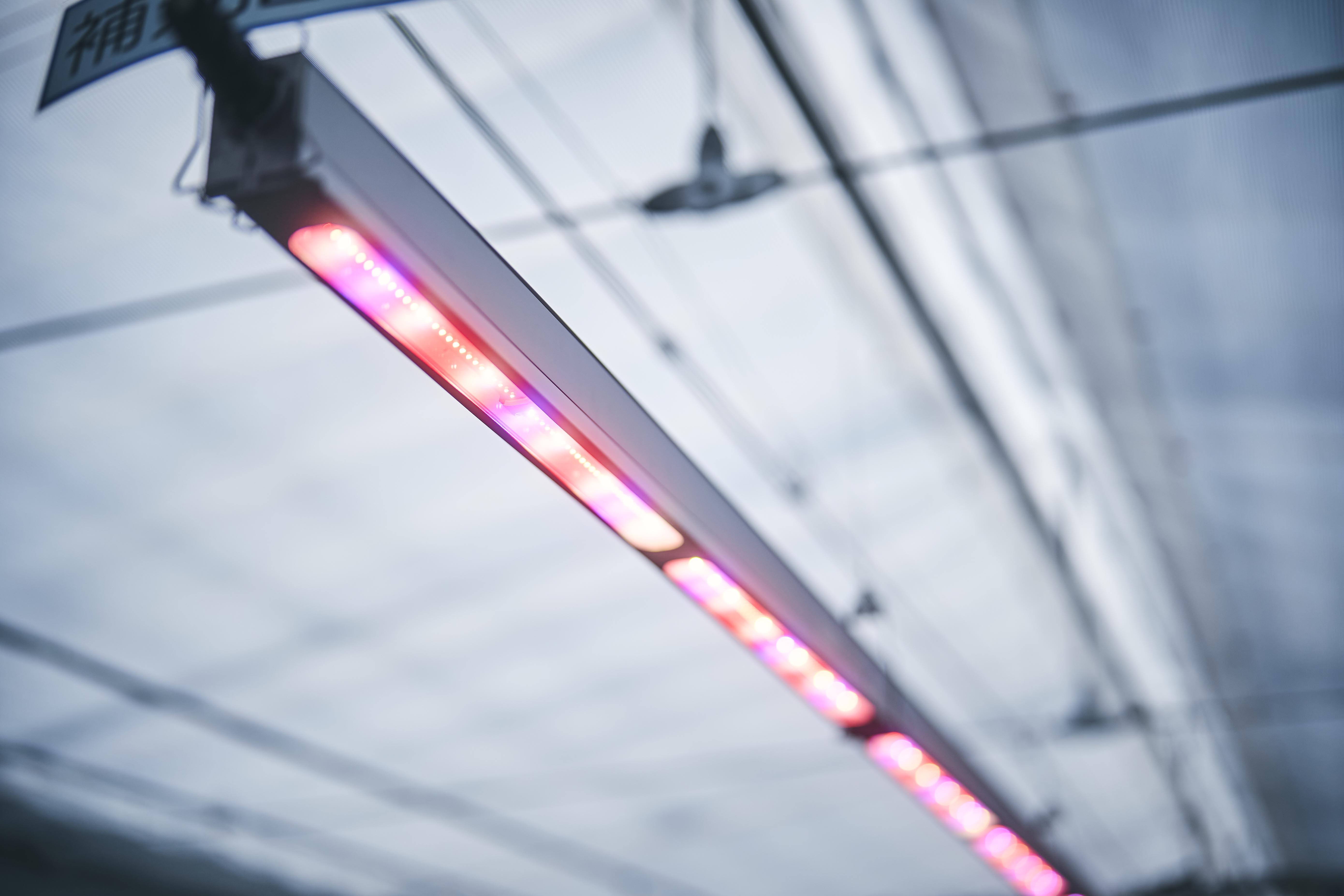
According to Group Manager Daichi Shinkai, whose job involves growing strawberries alongside building engines, greenhouse lighting holds one of the keys to producing sweet, tasty fruit.
Daichi Shinkai, Group Manager, Engine Manufacturing Engineering Div.
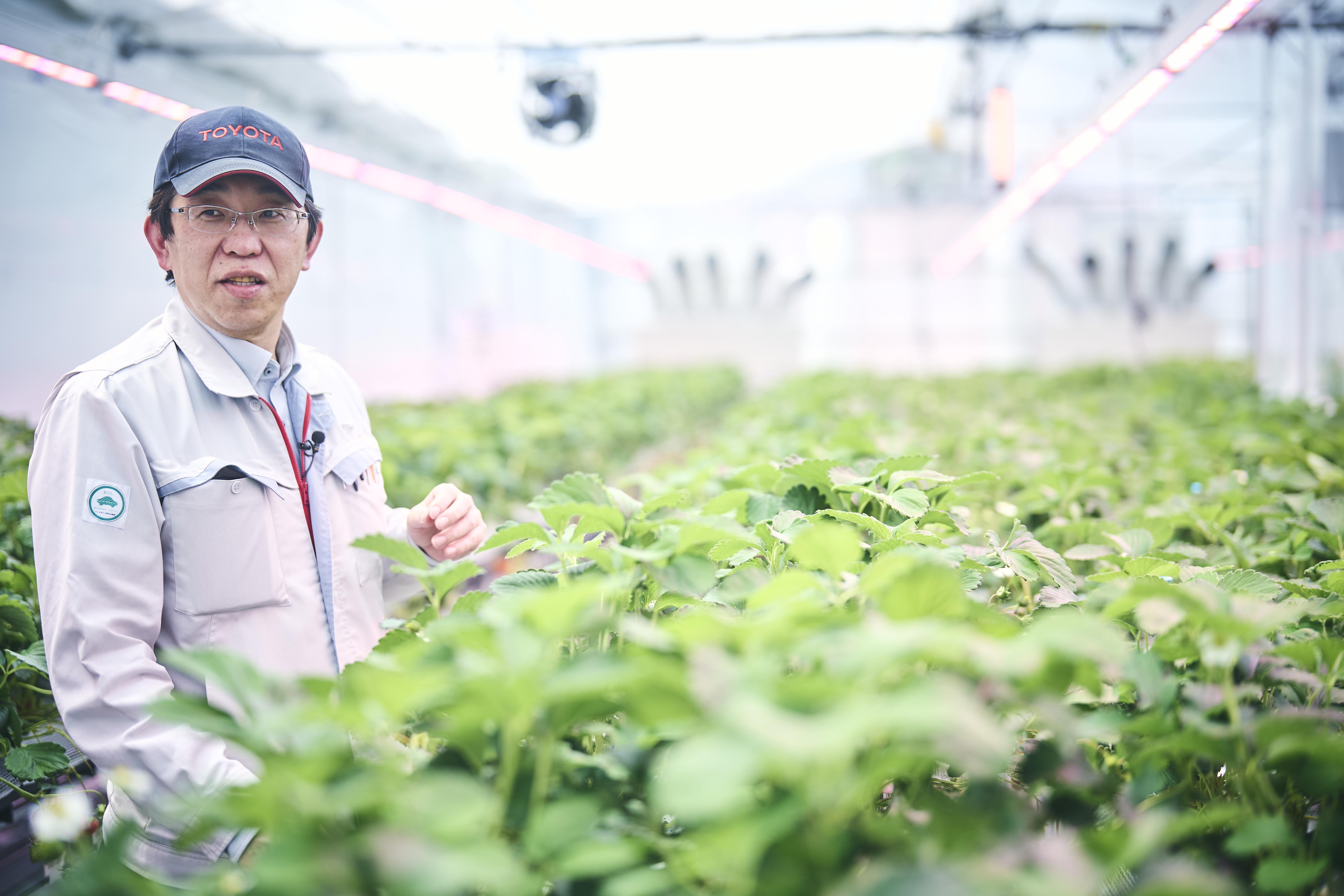
Strawberries don’t do well if the light is too strong or too weak, which is why we regulate it with LEDs on rainy or cloudy days.
The LEDs look pink because we’ve removed the green tones. Green light is not necessary for photosynthesis, which is crucial to plant growth. We also use ultraviolet light to kill bacteria so we can minimize the need for pesticides.
Katsuichi Minami, who oversaw improvements in cylinder head fabrication as part of the Engine Casting Division, shared his tips for growing strawberries with high sugar content.
Katsuichi Minami, Engine Casting Div.
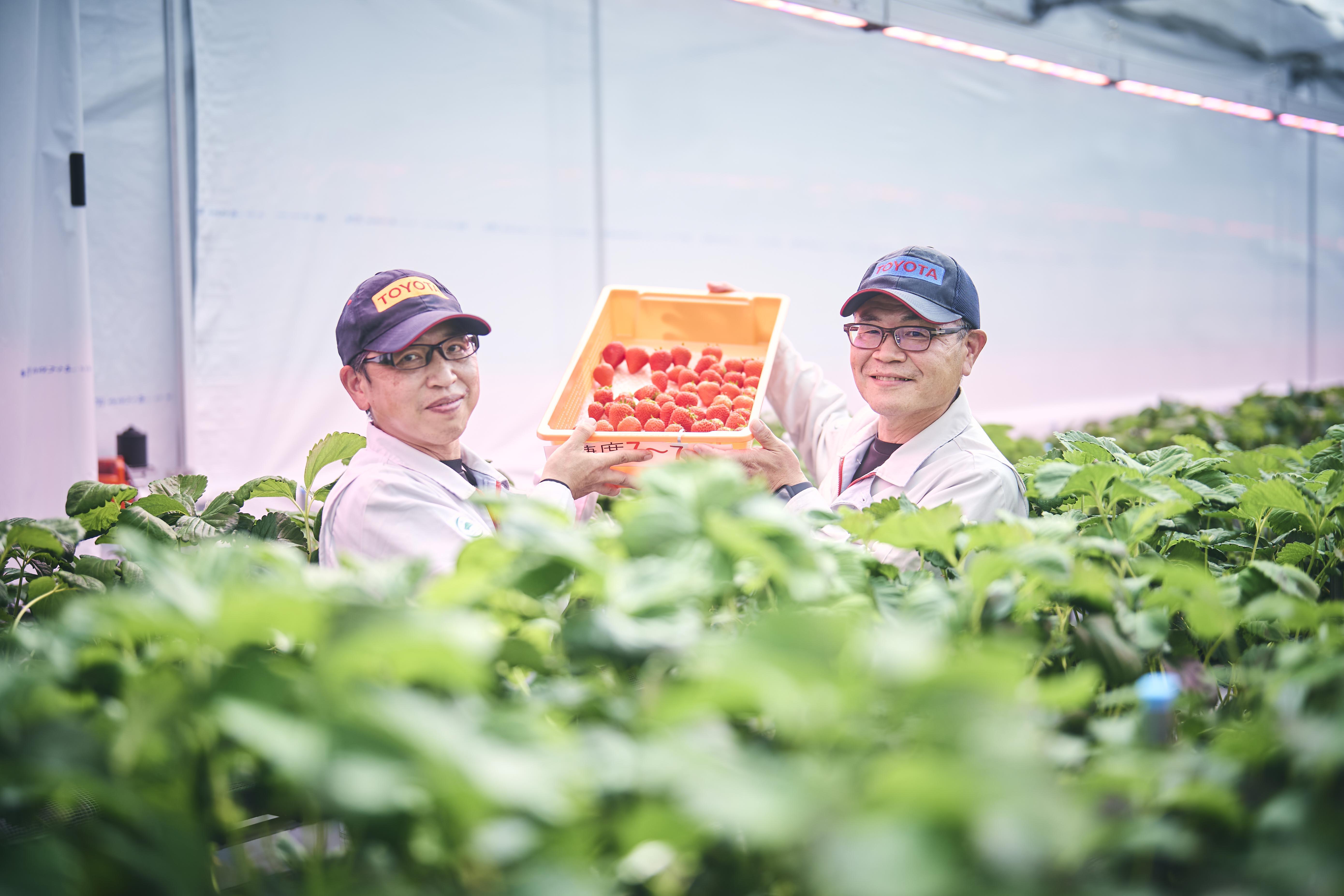
The key to increasing sugar content is to accurately measure temperature differences between night and day so that nutrients can be supplied at the ideal times. You can’t water or fertilize too much or too little—give only the right amount at the right time. The occasional mist spray helps to control the temperature through evaporation.
Another issue in agriculture is the physically demanding nature of the work. We spoke with Yukinori Umano, Production & Development Manager at smart farming exponents Asai Nursery, about the challenges that farmers face.
Yukinori Umano, Asai Nursery
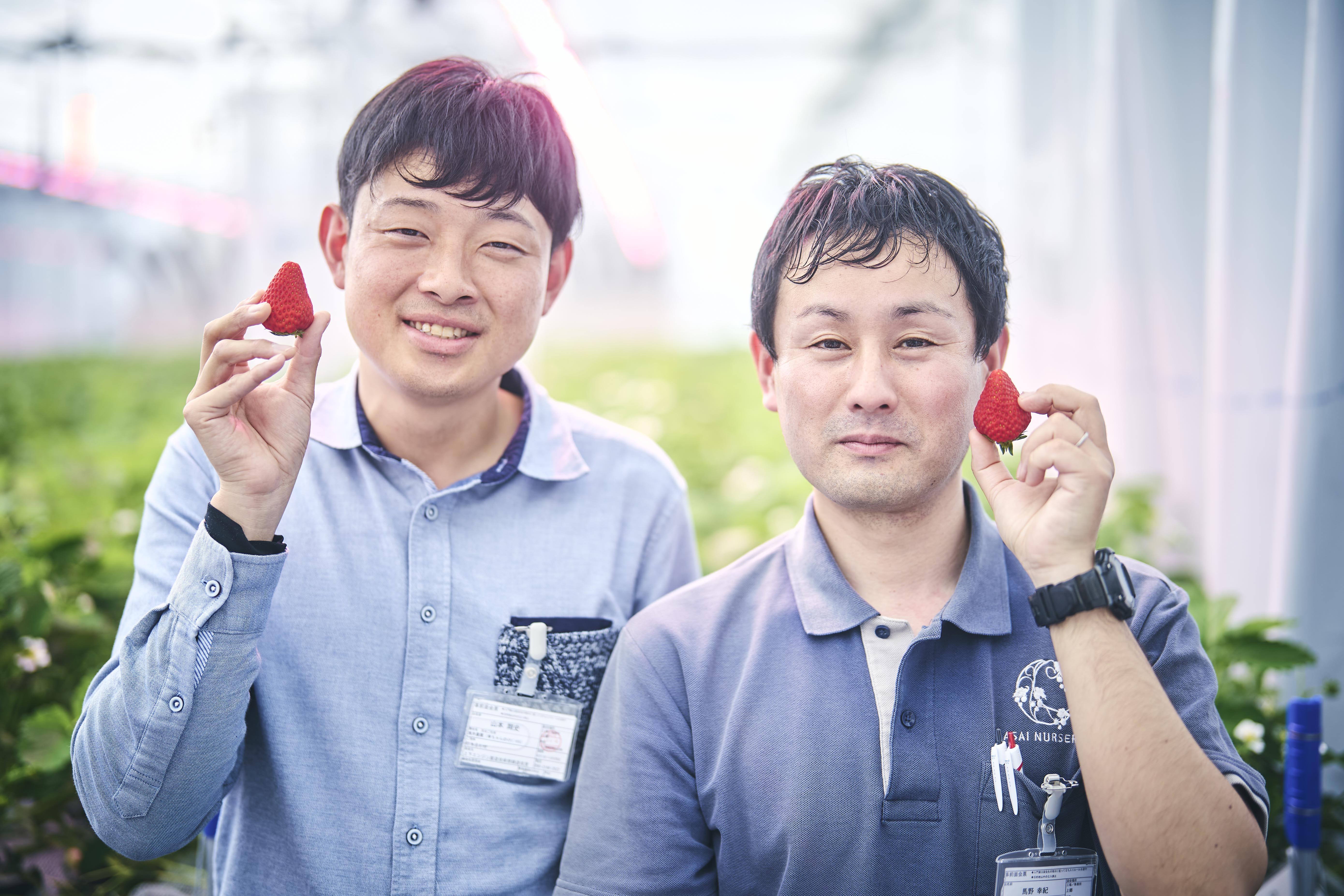
We’re working together to come up with ideas for lightening workloads. One aspect of Toyota’s approach that we found beneficial is the 5S* method.
Numbering the crop rows allows you to visualize and manage where different varieties are planted. I was impressed by the way you can instantly tell when something is wrong. These are basic things, yet they are still an area of weakness for farms.
*Standing for Sort, Set in Order, Shine, Standardize, and Sustain.
Tomatoes and badminton, all in a day’s work
Next, the Toyota Times team headed for the Myochi Plant, which manufactures drive-related parts and cast components. The heat produced by the facility, meanwhile, is used to cultivate cherry tomatoes.
Stepping into the greenhouse, we encountered a startling sight: endless vines filled with cherry tomatoes, bathed in hot pink light. The unusual space feels like a modern art installation.
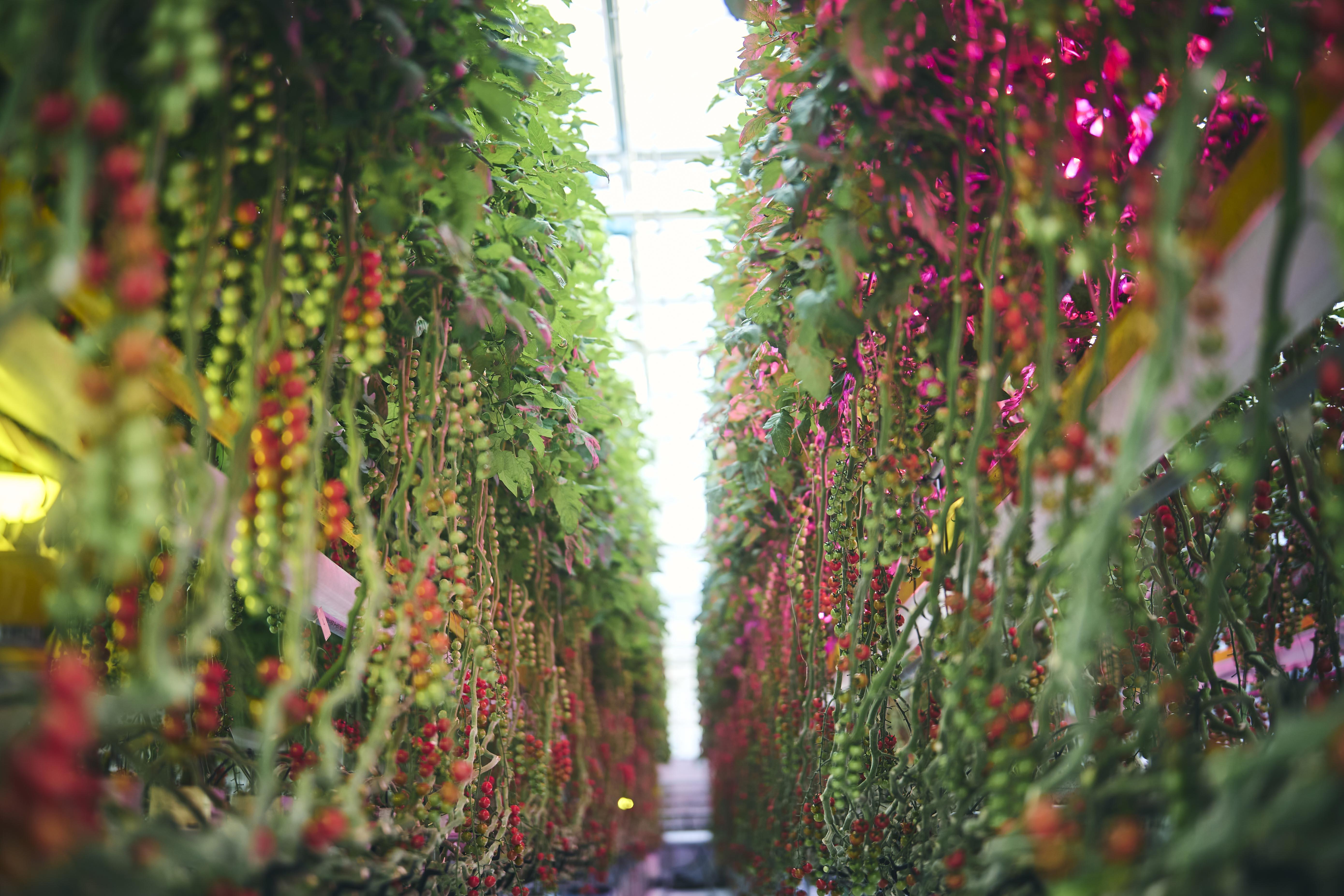
Among those who put their hands up for the project was 23-year-old Chihiro Miyagi. Now in her sixth year at Toyota, she had been involved in inspecting cast parts for vehicles.
Now Miyagi grows cherry tomatoes by day and spends her nights practicing badminton as a member of the company team. Friends often ask what it is she does at Toyota.
Chihiro Miyagi, Myochi Plant Foundry Div.
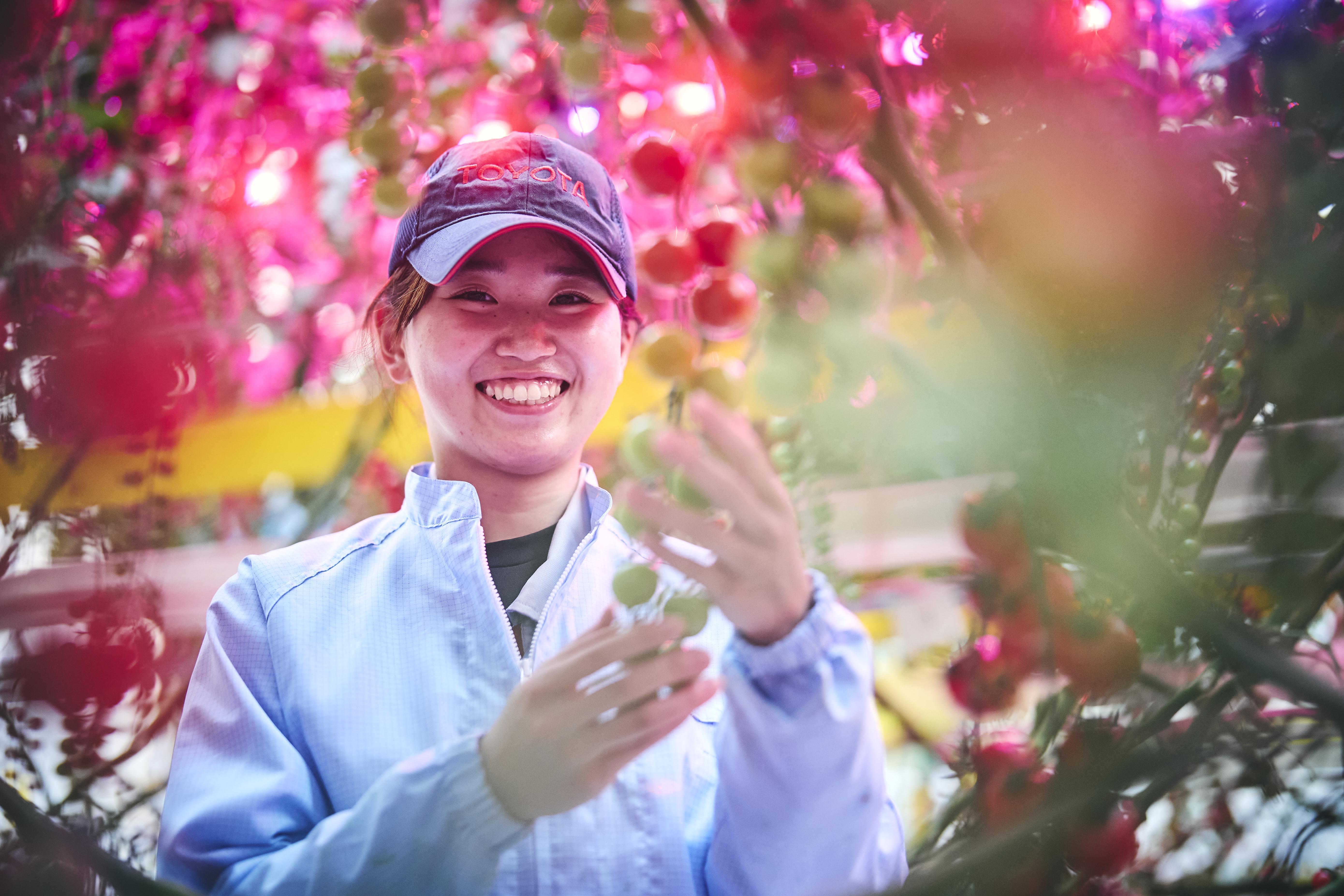
Coming from a farming family, I was keen to take part. When I told my parents that we were using waste heat to farm, they found it to be mind-boggling. (laughs)
In a factory, you can repeat the same processes to create the same products, but that isn’t the case with living things. Working on this project taught me how hard it is to raise crops, and made me keenly appreciate what my parents do.
Even so, everything here—from temperature and humidity to light and CO2 levels—is electronically controlled. Knowledge is shared such that anyone can easily perform the tasks, including color swatches for identifying tomato ripeness. “This is easier than helping out at home,” admits Miyagi with a laugh.
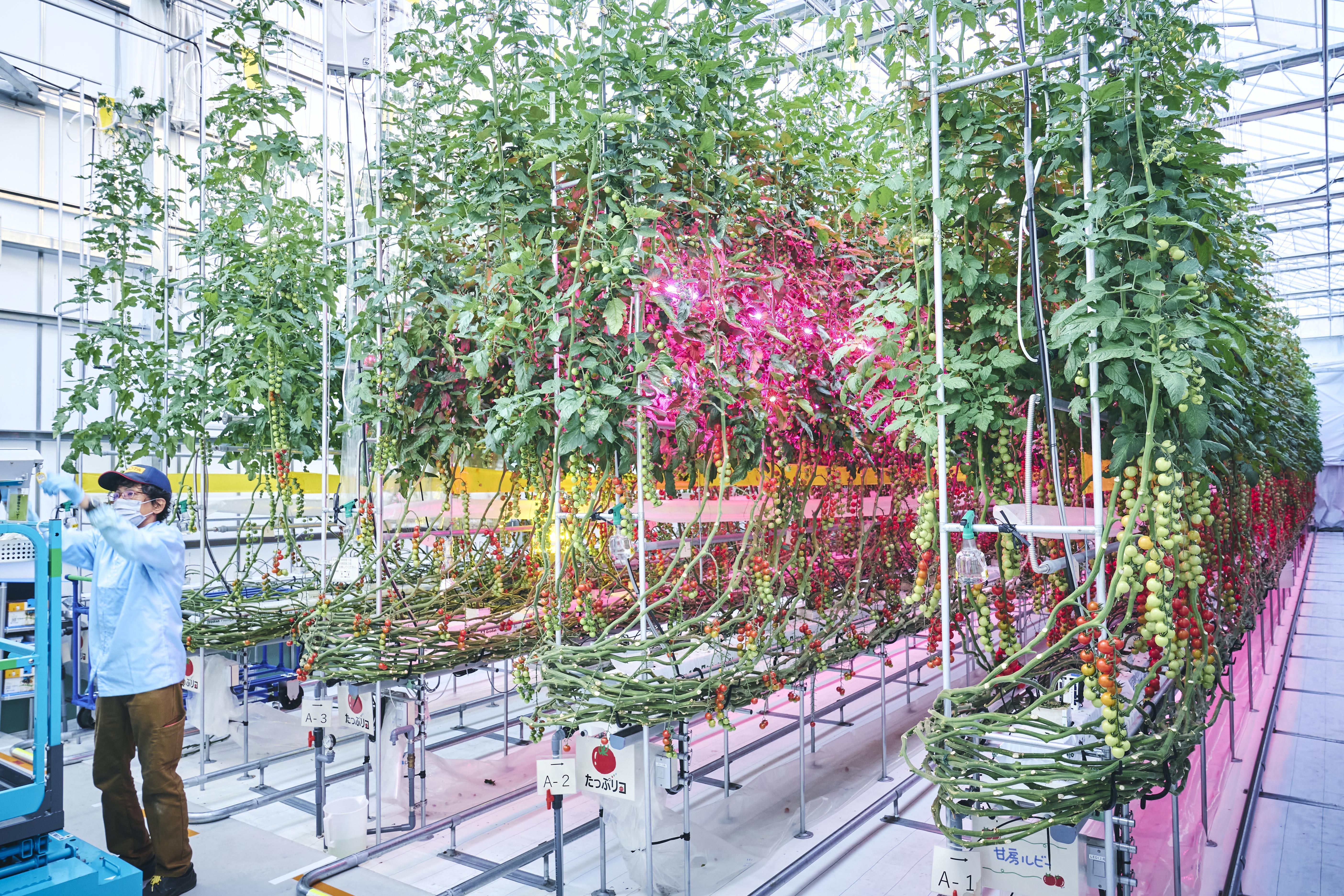
We also spoke with Wu Tingting, an agricultural scientist who handles the greenhouse’s data.
Wu Tingting, Production & Development Unit, Asai Nursery
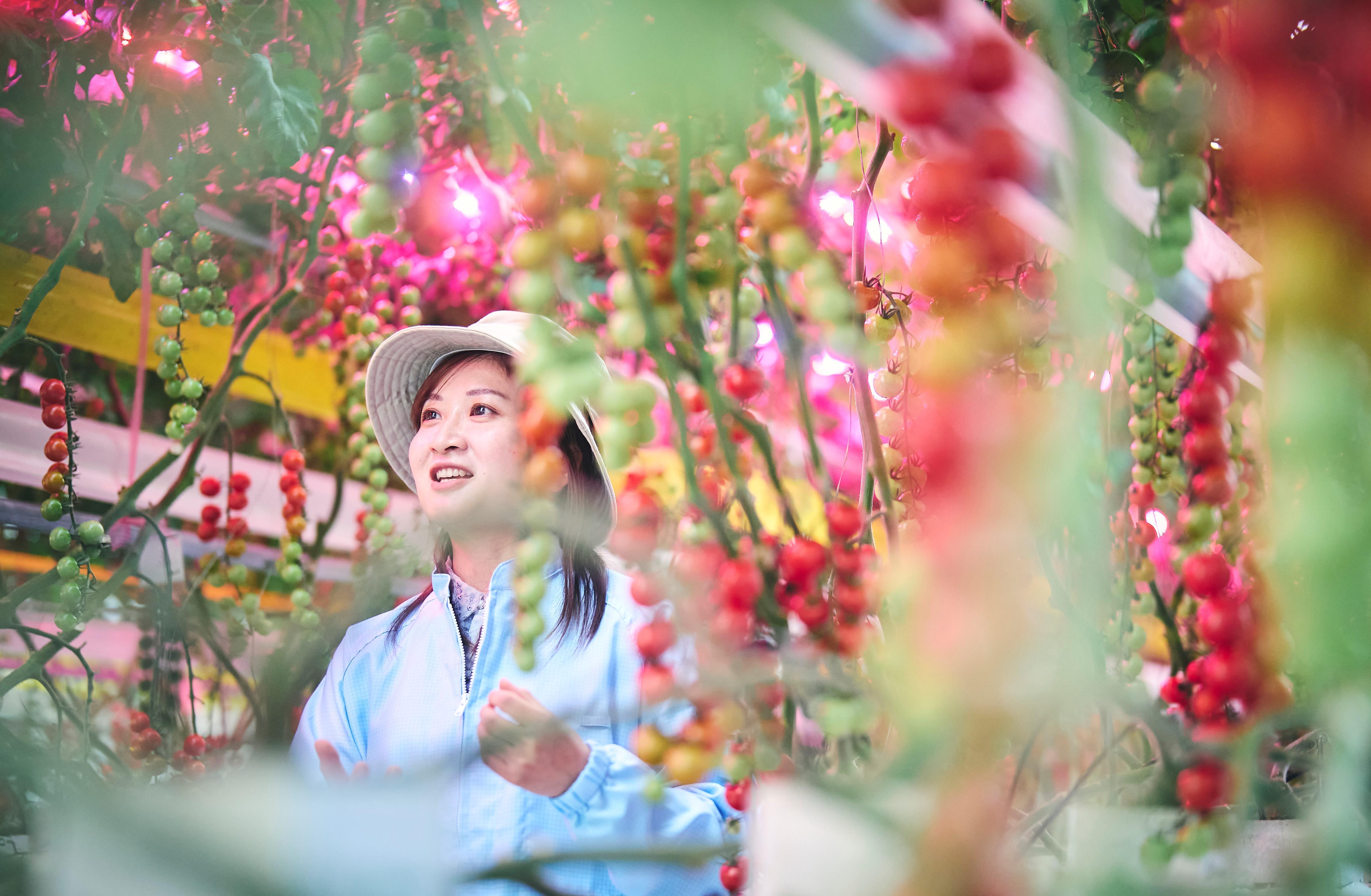
I transferred to a Japanese university to study advanced agriculture that we don’t have in China. Toyota’s high-tech farm offers great learning experiences every day.
Before wrapping up, let’s return to Okajima to hear his vision for the project.
Okajima
If we look at the entire food business, production sits right at the bottom. You can’t raise profits without considering infrastructure for processing and distribution.
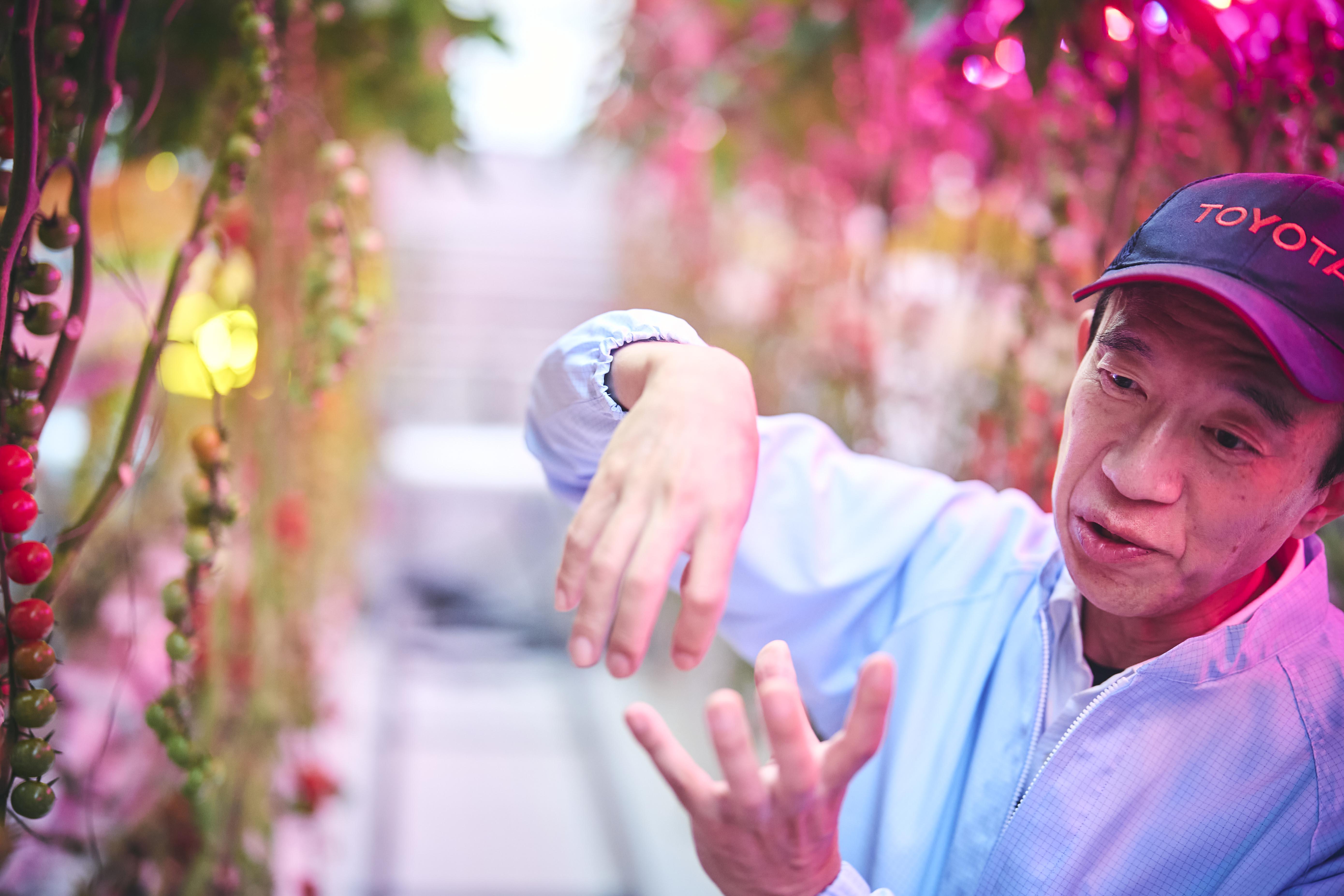
Here too I believe we can draw on Toyota’s expertise, whether in subscription services or the successful business model the company has cultivated with dealerships.
Okajima is determined to strengthen Japanese farming. Perhaps Toyota’s glimmering greenhouses will serve as a new beacon for agriculture.

